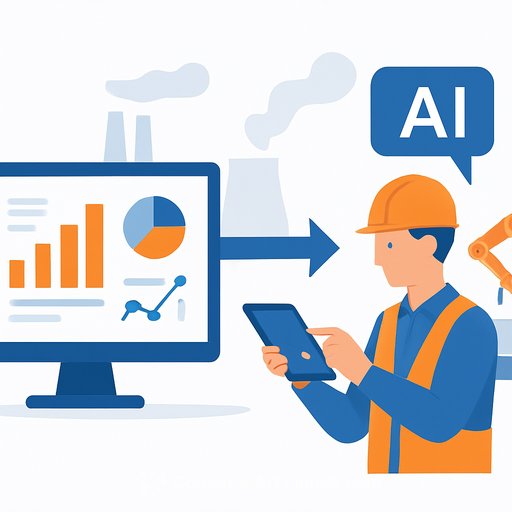Can Bitdeer's AI Hosting Pivot Strengthen Its Edge as Mining Market Shifts?
Bitdeer Technologies Group is speeding up Bitcoin self-mining while moving into AI hosting and data center build-outs. For operations leaders, this is a capacity, power, and reliability story. The goal is clear: diversify revenue and make cash flow less sensitive to Bitcoin cycles without overextending cost structure.
What the Pivot Means for Operations
- Workload mix: AI hosting introduces GPU-dense clusters with very different thermal and networking needs than ASIC miners. Expect separate containment, higher rack densities, and stricter SLA design.
- Power strategy: AI training loads are less bursty than mining but still power-hungry. Long-duration PPAs, demand response programs, and curtailment playbooks matter to stabilize $/MWh and uptime.
- Cooling and density: Liquid or immersion cooling may be required to keep PUE tight at higher kW/rack. Treat facility retrofits as a first-class program, not a bolt-on.
- Connectivity: High-throughput, low-latency backbones, cross-connects, and WAN resiliency become gating factors for AI tenants. DCIM and observability need an upgrade path.
Revenue Diversification vs. Cost Pressure
AI hosting can smooth revenue versus pure mining. That said, R&D and capex are climbing, and near-term earnings will stay variable.
The SEALMINER A3 series pushes efficiency in mining hardware and supports the company's vertical strategy. Useful for future margin potential, but it won't immediately offset the volatility tied to Bitcoin prices and energy costs.
Numbers Operations Leaders Should Track
- Forecasts cite a path to roughly $1.8B revenue and $343.9M earnings by 2028. That implies about 71.6% yearly revenue growth and a swing from about -$320.3M to positive earnings.
- Some fair value estimates cluster near $24.33 per share (about 37% above a recent price reference), while investor views range widely (roughly $18.55 to $175.43). Wide spreads signal execution and cost uncertainty.
- Assumptions likely include high AI-hosting utilization, successful ASIC commercialization, and on-time data center energization. Slippage in any of these can compress margins quickly.
Execution Risks to Factor Into Plans
- GPU supply and lead times affecting rack delivery and revenue ramp.
- Power price volatility and grid interconnection delays.
- Concurrent buildouts stretching construction crews, commissioning schedules, and QA.
- Cooling retrofits that miss density targets or PUE goals.
- Talent bandwidth across data center operations, tenant onboarding, and R&D.
- Permitting and compliance, including AI data residency and environmental rules.
Operator's Checklist for Assessing BTDR (or Any Mining-to-AI Pivot)
- MW energized vs. contracted; AI hosting utilization rate (%) and time-to-ramp.
- PUE/WUE trends by site; cooling method (air, direct-to-chip, immersion) and supported kW/rack.
- Capex per AI-ready MW and days from NTP to energization.
- Contract quality: take-or-pay, duration, indexation, prepayments, and penalties.
- Revenue mix and margin by segment: self-mining, hosting, AI hosting, hardware sales.
- Uptime, incident rate, and SLA credits; change management and tenant MOPs.
- Hedged power percentage and blended delivered rate ($/MWh).
- R&D burn vs. milestones (e.g., SEALMINER A3 commercialization and efficiency gains).
What Would Strengthen the Edge
- Lock-in multi-year PPAs with indexed but capped escalators; diversify across grids and ISOs.
- Standardize a modular, AI-ready build template that hits target PUE and density out of the box.
- Secure anchor AI tenants with clear expansion rights; prioritize take-or-pay and prepayment structures.
- Invest in observability: DCIM, telemetry, capacity forecasting, and automated work orders.
- Maintain a visible interconnection pipeline and phased commissioning to reduce idle assets.
Practical Resources
- ASHRAE data center cooling references for liquid cooling and high-density best practices.
- U.S. EIA electricity data to benchmark power pricing and volatility.
Level Up Your Team
If you're standing up AI hosting capability or retraining ops staff for GPU-heavy environments, explore focused learning paths by role: AI courses by job and the latest additions here: new AI courses.
Bottom Line
Bitdeer's pivot can reduce earnings swings if it hits utilization, locks in affordable power, and scales AI-ready builds without overruns. The opportunity is real, but so is the execution risk. Watch utilization, power economics, contract quality, and build cadence-they will tell you if the strategy is working.
Your membership also unlocks:






